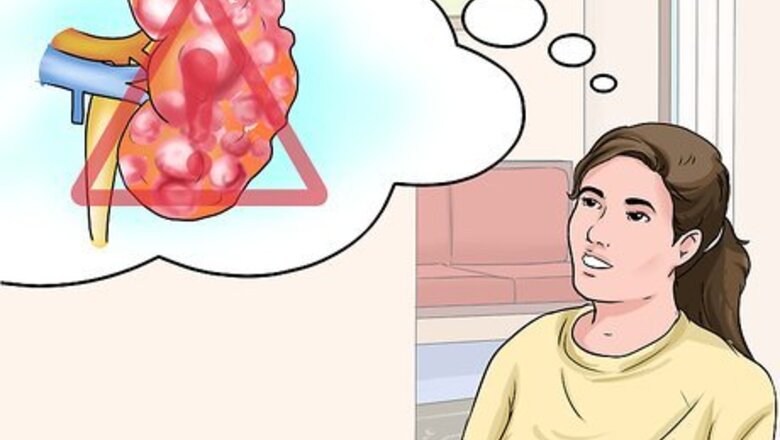
views
Preparing for Your Fast
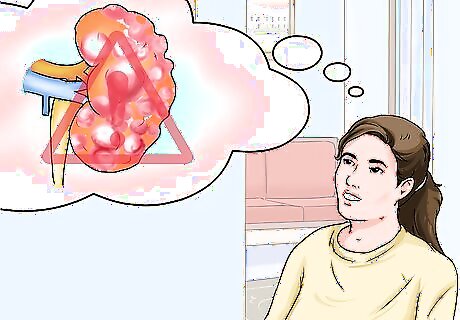
Make sure you are healthy enough for a fast. While the goal of a fast is to help improve your health, that doesn’t mean everyone can do it. If you are have certain health conditions, or are not healthy enough to go without solid food for several days, fasting can be dangerous. Do not fast if you have kidney disease. Fasting may create high levels of potassium and other minerals in your blood. Because your kidneys aren’t functioning properly, this can be hazardous to you. If you are diabetic, it is best not to do a juice fast. Relying on juices for your nutrition involves the heavy intake of sugars. This can cause your blood sugar to spike, leading to fatigue, unexplained weight loss, blurry vision, excessive hunger and thirst, and slower healing time for injuries and infections. Do not do a juice fast if you are undergoing chemotherapy. Your body will be taking in increased antioxidants from the juices, and lower levels of protein.
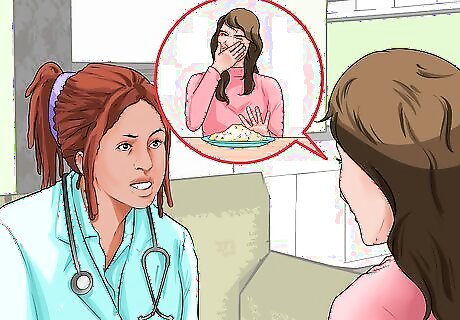
Talk to your doctor. Before undergoing any substantial change in your diet, you should discuss it with your doctor to make sure there aren’t other potential concerns. They will be able to let you know if there are certain aspects of your health you should be concerned about. If you are fasting for a specific health reason, you should make sure to do so under the supervision of a doctor or dietitian. They will help you keep track of your physical goals as well as keep an eye out for warning signs of other health problems.
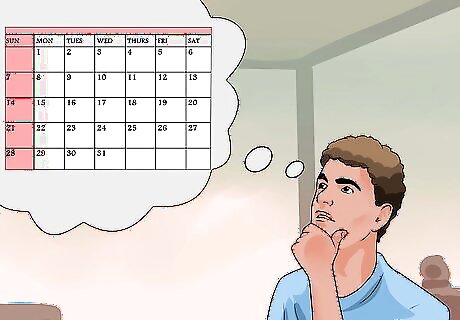
Decide how long you intend to fast. There is no one way to do a fast, and depending on your experience and interest in the program, you can fast for as little as a day, or a month or more in some cases. When thinking about your fasting length, consider your health, the cost, and your ability to stick with the program. There are many different types of fasting programs out there, each with their own recommendations for timing. Whichever one you pick, make sure you follow their guidelines. Extending the fast beyond their recommendations will not make it work better. If you are new to fasting, you should start with a short fast of a day or a weekend. If you want to fast for longer periods of time, you’ll need to work your way up to that.
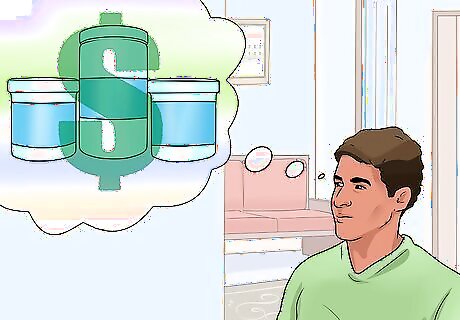
Figure out what you intend to spend. Cleansing, either through a program or by using your own juicer, can be expensive. Cleansing programs can run to around $65 to $70 per day, which adds up for the several days or weeks you are on the program. Juicers are anywhere from $30 to $300, plus the cost of fresh fruits and vegetables to squeeze. Make sure you have saved the money you will need.

Stock up on what you need. If you are going on a water or juice fast, make sure you calculate how much liquid you intend to drink during your fast. This includes how often you intend to drink, and how much with each serving. You'll also want to be prepared for what comes next. Make sure you have the food you will break the fast with as well. Shopping for food after not eating for several days or weeks can lead to you buying too much of the wrong things. Make sure you have lots of easily digestible foods like fresh fruits and vegetables, as well as liquid foods like soup.
Doing a Fast

Stay on schedule. If your fast involves consuming teas or liquids at certain points during the day, make sure you do it. In most cases, you are using the juices as a replacement for your regular meals. Sticking to the schedule will keep your digestive system regular and on track, and help you stay disciplined with the program. Unless otherwise directed, a good rule of thumb is to have one glass of juice or water (depending on your cleanse) during each regular meal time. That means a glass when you wake up (for breakfast), one in midday (for lunch), and one in the evening (for dinner). You can supplement these with smaller glasses between meals to help keep you hydrated.

Find ways to relax. Use this opportunity to take up other relaxation activities to help de-stress and revitalize your body. Meditation and yoga are both good ways to help clear your mind. Meditate. Find a quiet place and get into a comfortable sitting position. Close your eyes or keep them open (to avoid going to sleep), and focus on what you are experiencing in the present moment. You might also try focusing on controlling your breathing, thinking about slowly moving each of your body’s muscles, or even just focusing on a distant object to the exclusion of all others. If it helps, you can also repeat a mantra to help clear your mind. Try yoga. Make sure you have a clear, quiet space where you can move around without obstruction or interruption. Research several stretches to do on your own, and try them. If you aren’t comfortable working by yourself, you can always start attending a class. If you are a beginner, start lightly, and slowly increase the frequency and intensity of your exercise. Exercise lightly. Fasting means that you won’t be taking in calories and nutrients found in food. If you do need to exercise and move around, stick to low-intensity workouts. Things like walking, or a brief swim, can give you a workout without pushing your body too hard. Avoid things like weight training or long runs.

Get regular sleep. Make sure you are getting a good amount of sleep, around seven to eight hours each night, and that you are sleeping on a normal schedule. Fasting can be a shock to your system; you don’t want to add another one by losing sleep. For the first few days, you may even consider going to bed a bit earlier than usual. This will help your body adjust to your changing levels of energy.
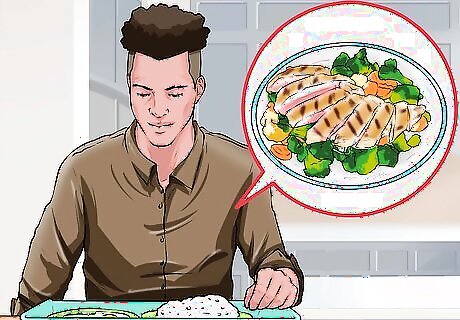
End your fast. Fasting should be temporary, and you will eventually need to go back to eating solid foods. When you fast, you take in fewer calories and nutrients like protein. Lowering your calorie count will diminish your energy and reduce your metabolism. If you don’t get enough protein, eventually your body will begin breaking down muscle tissue for energy, causing you to lose muscle instead of fat.

Ease back into eating. When you are finished fasting, you can’t just start eating like you did before the cleanse. Instead, start with easily digestible foods for at least your next two meals, and then slowly build up your intake of protein and complex carbohydrates. You may need to take even more time if you are fasting for an extended period of time, consult with your doctor in such cases. For the first day or two, it is good to eat things that are similar to what you have already been consuming. These are fresh fruits and vegetables, in solid form this time, as well as natural foods like nuts and seeds. Liquid foods like soup are also good ways to ease yourself back into regular eating.
Trying Different Types of Fasting
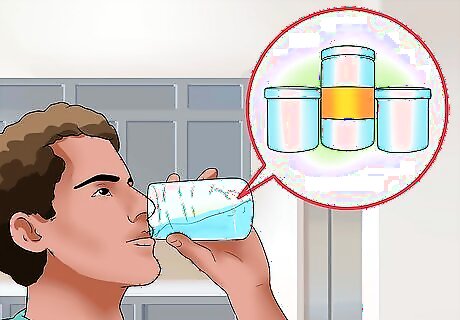
Go on a water fast. One of the simplest fasts you can do is a water fast, where you consume nothing but water for a certain period of time. Drink one to two quarts of water per day, spaced out during regular meal times. You can supplement it with a slice of lemon. Your fast should not be very long, preferably under 72 hours. Also make sure you space out some time between fasts, at least 3 weeks, to build up your strength. You’ll want to avoid doing much of anything while on the water fast, so make sure you are prepared to rest often. If you can, spending your water fast in a supervised retreat or clinic, where you can be closely monitored by professionals, is the safest option. When done under medical supervision, one study showed water fasting could be a means of normalizing borderline high blood pressure. Usually it works best as a gateway to further diet and lifestyle changes, especially since you won’t be able to live off the water fast for more than a few days.
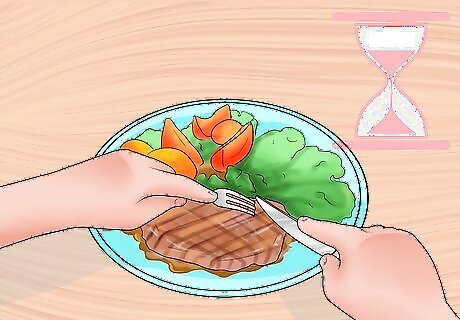
Try intermittent fasting. This is a fasting practice that isn’t about not eating at all, but more about taking longer breaks between meals. There is a lot of flexibility in this kind of fasting, as you will be making the conscious decision to skip meals. This is a popular way to think about eating among people on the Paleo diet. A good starting plan is 16/8 method, where you restrict the times during which you eat. Find an eight hour window, say 10:00 am to 6:00 pm, and only eat during that time. That will give you 16 hours during the rest of the day where you will fast. On some fasting plans, you don’t avoid eating on certain days, but simply consume less food. On the 5:2 diet, for example, you could replace a full dinner with something small like a cup of yogurt or piece of fruit two days out of the week. This kind of fasting is meant to be tied to a healthier diet. Make sure you are consuming nutrient rich foods like fresh fruits and vegetables and protein-rich meats. Avoid processed foods and things high in salt and sugar. This is not a good diet for people who like to snack every few hours. In addition, diabetics should avoid as long periods without eating can cause their blood sugar level to get too low.
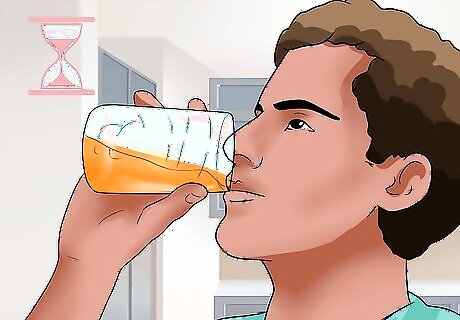
Try a beginner's juicing plan. If you have never done a juice cleanse before, you shouldn’t just jump in. Try a beginner fast that will only last for a short time. This will allow you to see if fasting is right for you, and help you get started. You’ll want to get a variety of fruits and vegetables for your beginner’s diet. Look for hard foods with a high water content. These include carrots, apples, celery, beets, ginger, oranges, lemons, and leafy greens. Get a mixture of colors to get a variety of nutrients. Mix and match different vegetables to find flavors that you like. If you don’t like certain vegetables, you don’t need to eat them. Drink slowly. Instead of making your juice and downing it as quickly as possible, help yourself by going slow. Take small sips, and don’t swallow right away. Swish each sip around in your mouth a bit to mix with saliva before swallowing. Fast for one to three days. If you are beginner, it will be hard to go much longer. Fasting over a weekend, Friday through Sunday, will let you break into the diet. Because it’s the weekend, you’ll also have more freedom in your schedule to make fresh juices and plan your consumption.
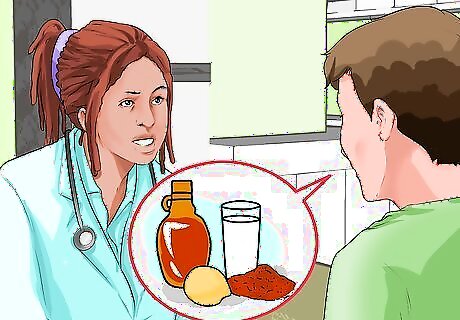
Try the Master Cleanse. One of the most common and popular cleansing diets, it involves consuming a specially mixed “lemonade” drink. Be sure to discuss your plan to fast with your doctor before trying it. Start with the ease-in process. A few days before the fast, you’ll want to prepare yourself physically and mentally for the cleanse. Change your diet, switching your meals to fruits and vegetables, then juice. Make the lemonade. Mix 2 tablespoons of fresh lemon juice from half a lemon, 2 tablespoons of maple syrup, 1/10 teaspoon of cayenne pepper, and 1 to 2 cups of water. Cut the lemon in half, and juice each half separately. Mix the rest of the ingredients together with the lemon juice in a glass. Drink it right away, don’t let it sit or wait. Fast for no more than 10 days. After about 10 days, you’ll want to ease out. Start with orange juice, soups, and broths. Increase to raw and organic foods, and try to avoid adding processed foods and dairy. Please note there is currently no reliable evidence this diet leads to weight loss or can eliminate any toxins from the body. The master cleanse can also potentially cause nutrient deficiencies which can lead to more serious health issues. Also, severely restricting calories usually does not lead to lasting weight loss.











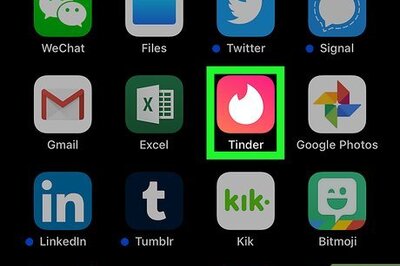




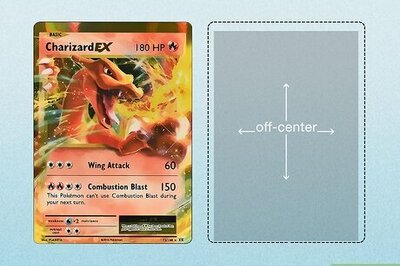

Comments
0 comment